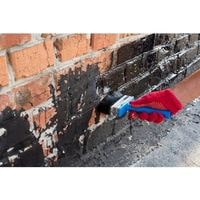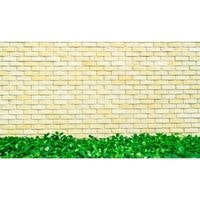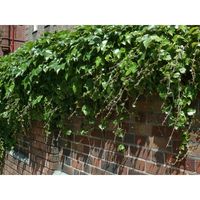How to cover Brick wall outside. There are multiple methods for concealing unsightly, damaged, or discolored bricks on an exterior wall. At the same time, you may decide to simply paint the wall.
There are other options ranging from temporary methods that feature a thin material that can be removed without damaging the underlying brick to more permanent products such as cement stucco.
Of course, when attempting to conceal an irregular wall surface, it’s critical to keep landscaping and surrounding structures in mind so as not to disrupt their visual appeal when utilizing a method of covering that could potentially result in unsightly gaps.
How to cover Brick wall outside

The ability to paint or drywall based on the nature of the wall itself is a
Factor in deciding on concrete wall covering because if your wall is on the outside and exposed, drywall requires furring strips underneath it.
Although drywall may appear as though it’s a solid solution, painting also works well for completely covering it.
Painting

Paints are one of the easiest ways you can enhance the appearance of your property’s exterior. Whether it’s a fence, wall, or porch.
Paint can really be an element that makes all the difference in creating a welcoming and inviting space for homeowners and guests to enjoy.
Your landscape is going to depend on what you choose to use as far as painting.
Traditional paint will give a classic look, whereas using stains will have more of a modern, stylish glance, something that is popular with contemporary properties today.
Vine Plantation
Planting ivy vines near your brick wall and training them to scale the surface is an affordable way to cover the wall while actively living your life so that you don’t have to do it permanently.
Clambering right out of the ground, vines such as English Ivy or Algerian Ivy make a much-needed home on the wall over time and can provide a gorgeous hardwood covering in time.
The vines themselves are very adaptable, but if they try spreading where you don’t want them to, it’s important to keep things under control with the regular cutting of the vines down below.
Though pruning may seem like more of a chore than anything else, consider how cheap it is compared to hiring someone else for this kind of work we’re sure that once you get used to doing it yourself, you’ll prefer doing it on your own.
Cladding
Making your own unique statement of style is possible with cladding. A variety of wall cladding options are available, ranging from a rugged, organic look to a contemporary, clean finish.
For instance, linear walling can be an eye-catching way to dress up an ugly exterior wall.
It creates a flat finish that is lightweight and embraces the characteristics of natural stone, including its variation in color and texture, as well as its imperfections.
Stonewall panels are another option for cladding. It is created by cutting stones open, which is why you see so many different variations within one piece, including cracks, small pieces, and depth variations.
Each side is unique, which gives the item an authentic look that is stunning when used in a garden area.
Select Shrubs

One way to hide a brick wall is by planting large evergreen shrubs in front of it.
If these shrubs are allowed to grow according to their maturity,
they will eventually reach their full height and width and thus, will successfully hide the wall year-round.
Planting shrubs with colorful berries is also a good idea because not only will they add more visual interest to your landscape but they will also soften the hard lines of your architecture.
For most people who have limited space in their gardens, using three or more shrub types and staggering them.
When planting is ideal because it creates additional visual interest and allows you to still use as much space as possible.
Render is an excellent choice
Much like a brick, the surface of your exterior wall is a bit rough. If you don’t have time to paint your wall it makes sense to smooth out the surface and play around with texture.
Render can be applied onto a textured wall in various thicknesses and gives added depth if you apply several layers of varying depth.
If you don’t have much experience with rendering, but would like a simple finish, this is the ideal choice.
How to cover Brick wall outside
Related Guides
